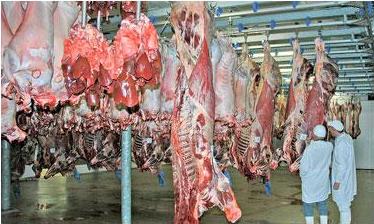 A slaughter can give you a sweet deal, or a lean animal. How much meat there is to an animal depends on several factors: race and species, selection (for meat, milk, sports, products, eggs...), food (fed on hormones, concentrates), age, carcass composition (high or low fat), slaughter time (winter fat), etc.
A slaughter can give you a sweet deal, or a lean animal. How much meat there is to an animal depends on several factors: race and species, selection (for meat, milk, sports, products, eggs...), food (fed on hormones, concentrates), age, carcass composition (high or low fat), slaughter time (winter fat), etc.
Males are usually a lot heavier than females.
The specified kilograms are indicative. I have e.g. already had a turkey of over 20 kilo, but such a beast is not the norm.
Pigeon 300 to 500 grams ready to cook
Chicken 0.6 to 2 kg
Rabbit 1.5 to 2 kg (Flemish giant to 6 kg)
Duck 1.2 to 2.5 kg ready to cook
Goose 3.5 to 4 kg (normal liver 100 grams, forced to: 600 to 800 grams!)
Turkey 3 to 5 kg
Goat 50 kg
Sheep 90 kg (10% coat)
Pig 90 kg carcass weight, 56% meat
Cow 700 kg
Hare 2.5kg ready to cook
Pheasant rooster 1.3 kg, 0.9 kg hen, ready to cook
Duck 300 to 700 grams of ready to cook
Goose 1 to 2 kg
Partridge 400 grams
Roe 15-30 buck, goat 13-22, 20 kg ready to cook
Hog boar 50-350, 40-300 sow
The consumption of meat decreased in Belgium of 99.9 kg / yr / pp in 2005 by 7.7 kg to 92.2 kg in 2010, mainly due to various meat scandals (dioxin crisis, etc.).
Fasting pigs loose liveweight between 0.12 to 0.20% per hour (most by urine and faeces). Without water even more.
In 9 hours after feed withdrawal carcass weight starts decreasing at 0.1% per hour.
In 24 hours there is a loss of 3.8% of liveweight and 2.1% of carcass weight.
48 hours result in a 7.2% loss in liveweight and a 4.4% loss in carcass weight.
